Did plesiosaurs have the hump?
Pick a random piece of plesiosaur paleoart and chances are the animal will be depicted with an arched back. A hump, almost. But did plesiosaurs really have the hump?
This arched posture can be traced back in the scientific literature to Andrews’ 1910-13 seminal works on the marine reptiles from the Oxford Clay. He reconstructed the skeletons of Cryptoclidus, Muraenosaurus, and Peloneustes with arched hump-like backs.

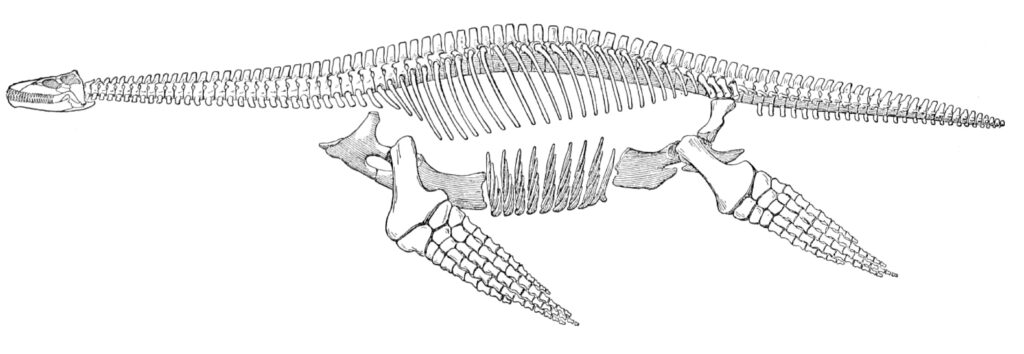
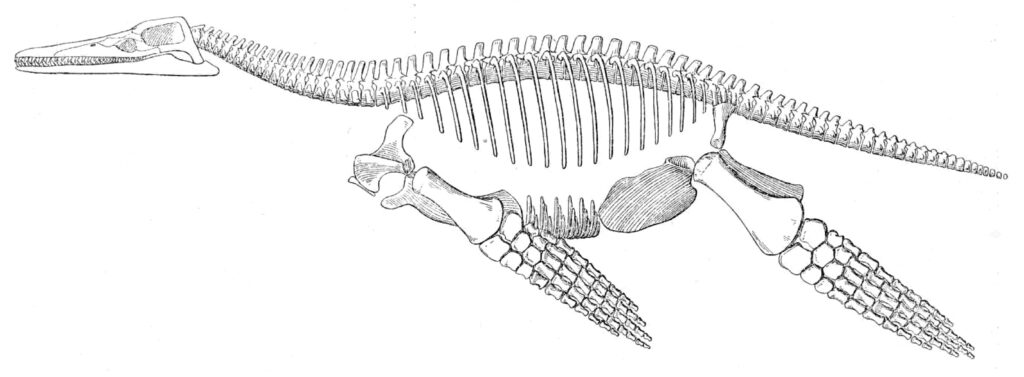
Andrews’ influential and important work is still heavily cited by modern palaeontologists, and likely set the ‘hump-back paradigm’ for researchers and artists alike. It was not subsequently questioned much and seems to have taken a hold in pop culture. Furthermore, many mounted plesiosaur skeletons have a pronounced hump, including the elasmosaur Morenosaurus.
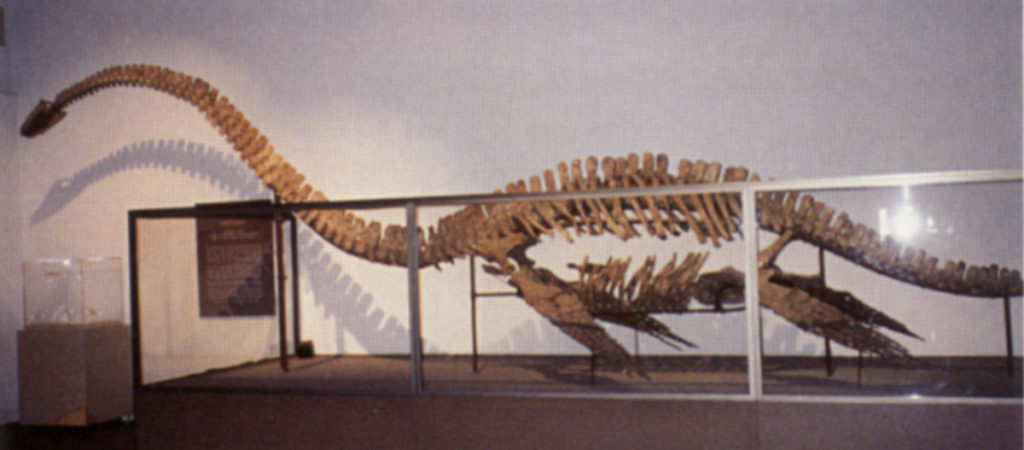
However, go back to the earliest reconstructions of plesiosaurs in the 1800s – those of Plesiosaurus by Conybeare (1824) and Elasmosaurus by Cope (1869) – and they were both depicted with a straight dorsal series.
.


Other plesiosaurs have also been reconstructed in illustrations or as mounted skeletons with almost straight spines, such as the polycotylid Dolichorhynchops (Williston 1903), and a notable post-Andrews depiction of the elasmosaur Hydrotherosaurus by Welles (1943) shows its spine as straight as an arrow.


So, what’s going on here, did some plesiosaurs have straight spines and others humps? Let’s turn our attention to the fossil record. Articulated plesiosaur skeletons preserved in lateral (side) view are exceedingly rare because plesiosaur torsos were dorsoventrally compressed, so their corpses typically settled on their backs or bellies, not their sides. But a few do exist.
A specimen (SMNS 51945) from the Toarcian of Germany of uncertain taxonomic affinity is preserved in lateral view and has a rather straight dorsal series. The lectotype of Microcleidus homalospondylus (NHMUK 36184) also has an almost straight dorsal series, as does the holotype specimen of ‘P’. macrocephalus (NHMUK PV R1336), both specimens have dorsal series visible from the side.
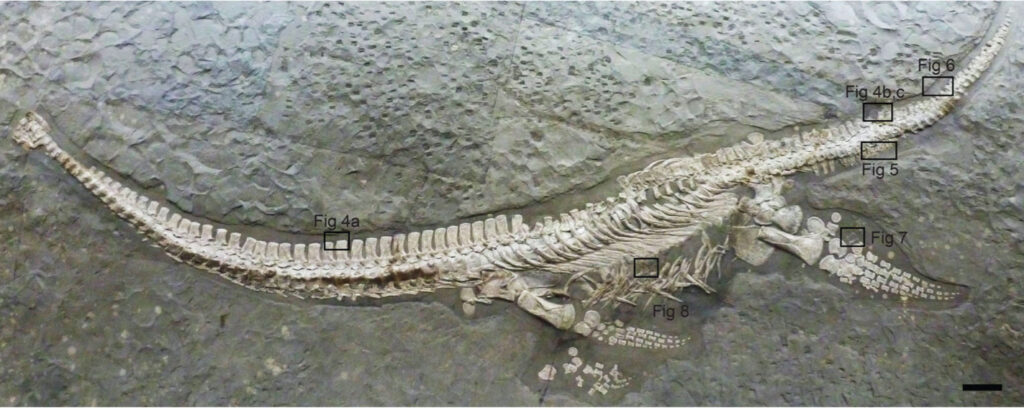
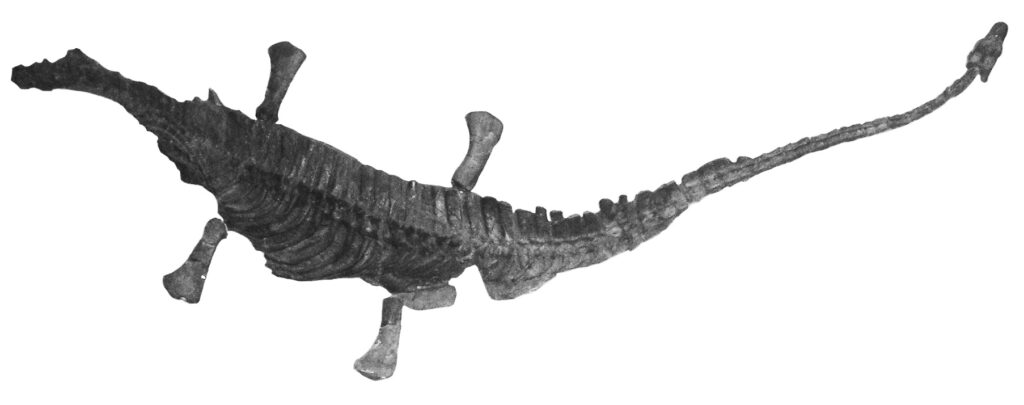

The only exception to this straight-columned arrangement, to my knowledge, is a referred specimen of Seeleyosaurus (SMNS 12039), which has a gently arching dorsal column. However, this skeleton’s dorsal series is slightly disarticulated posteriorly, which has accentuated an otherwise modest degree of curvature.

This evidence available from skeletons preserved in articulation therefore seems at odds with the extreme condition in Andrew’s ‘hump-back paradigm’. This topic first came into question for me when I began reconstructing Rhomaleosaurus during my PhD. When I articulated its vertebrae they formed a naturally straight series through the dorsal, sacral, and caudal regions, with almost no arching at all. There was just a slight curve in the pectoral region between the front of the torso and the base of the neck.

The closest relatives of plesiosaurs (pachypleurosaurs, nothosaurs, pistosaurids) had a straight spine, and most plesiosaurs for which clear evidence is available lacked a hump. So, the basal condition for plesiosaurs is a straight spine, and it looks like Conybeare and Cope may have been right, all those years ago, to reconstruct Elasmosaurus and Plesiosaurus with straight spines.
It is tempting, therefore, to regard Andrews’ hump-backed reconstructions as little more than speculative, but there’s no reason to rule them out. The spines of certain plesiosaur species, including those from the Oxford Clay, may really have been naturally arched. Perhaps as the group evolved and diversified, some plesiosaur genera deviated from the basal condition and developed arched spines. Ultimately, more research is needed to assess diversity of thoracic posture in plesiosaurs. In particular, we need to revisit those Oxford Clay specimens to see if their arched spines are authentic or artefacts.
Whatever their resting pose may have been, did the average plesiosaur have enough flexibility in their ‘backbone’ to bend their torsos to form a hump if they wanted to? Probably not. Plesiosaur torsos were inflexible, reinforced below by rigid plate-like girdles and a tight mesh of gastralia (‘belly ribs’). They had to have a rigid body to accommodate their limb-based approach to swimming. Any bendiness in the torso would lead to some of the force from limb strokes being transferred into bending the body rather than into propulsive forces. Functionally, they were akin to turtles or penguins, with either no bendiness at all, or just a modicum of bendiness.
So, while we wait for more data, the evidence as it stands seems to suggest that, nope, plesiosaurs generally didn’t have the hump.

RHOMALEOSAURUS is almost torpedo shaped in this reconstruction – possibly capable of striking large prey at high speed. It reminds me of the Icthiod peroxide rocket torpedoes designed by Barnes Wallis – Project HAYDAY.
I wonder if the idea of hump-backed plesiosaurs was over the years culturally reinforced because of their association with hump-backed lake-monsters… or the other way around.
This occurred to me, also. I think there’s probably some sort of relationship there.
It may just be that i’m so used to seeing the arched back on plesiosaurs, but to my eye ,the straight flat back just looks wrong, as in being an unsound design.
However the only reason I can think of to justify an arched back, at least off the top of my head, is that an arched back would be able to withstand pressure from above better than a flat back. That pressure from above being water pressure. So, if plesiosaurs spent long durations, deep in the water, then an arched back may have been beneficial to preventing back injuries over time.